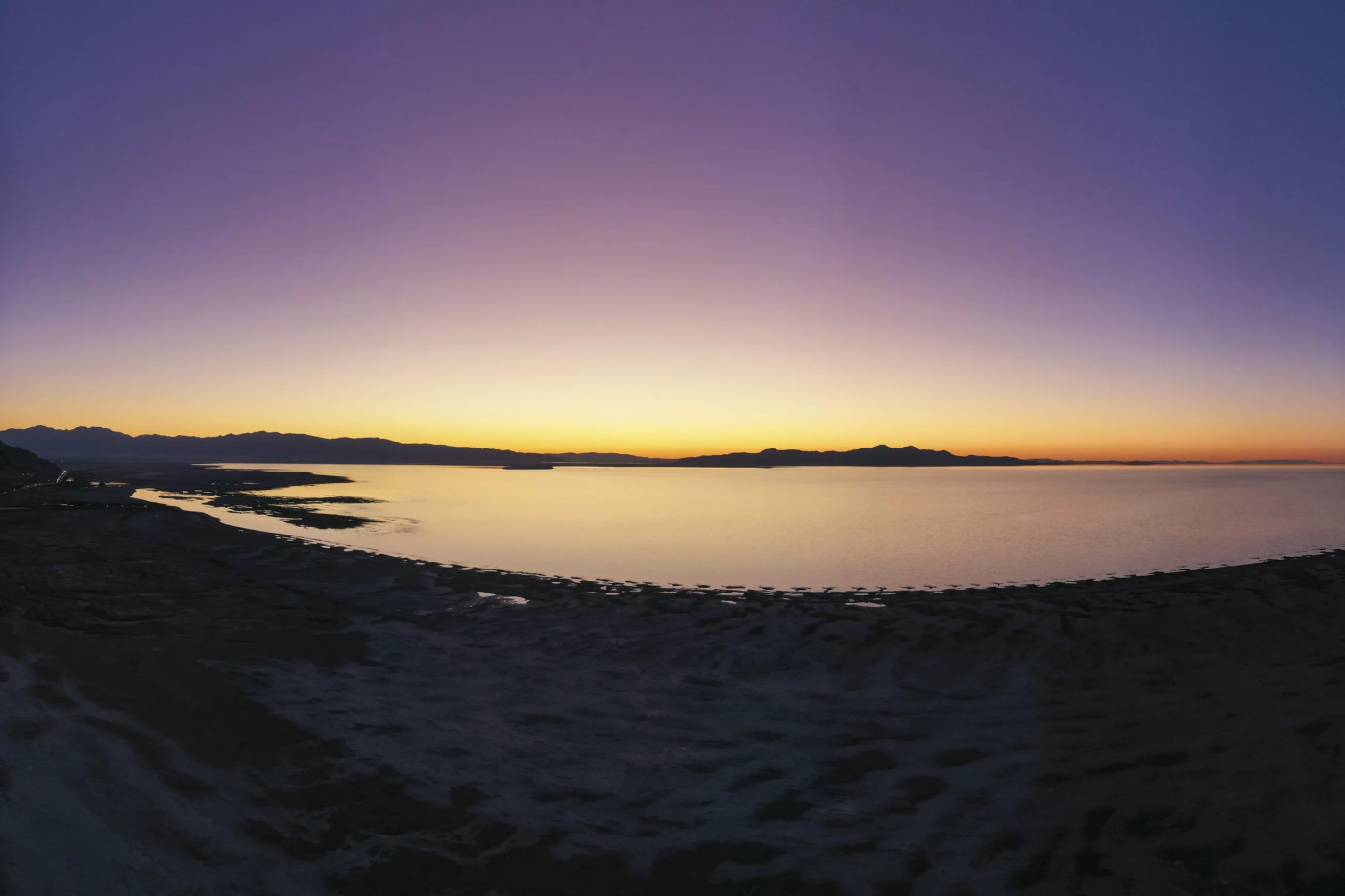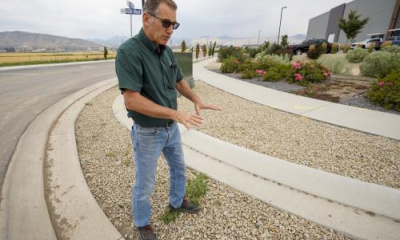Why Utah reporters are teaming up with their competitors to tell the lake’s stories — and search for solutions
At 98 years old, Alice Telford has known the Great Salt Lake longer than most, with memories of her salty friend strung like pearls through her long and interesting life.
Which is why it hurt so deeply when she got a look at the lake recently and barely recognized it.
“I almost cried, because I love that lake,” she said afterward.
Alice is a longtime friend of my family. We were driving together earlier this month when, as we turned onto a hill above Davis County, she got a good look over the valley in the afternoon sun, and gasped.
“Oh my gosh,” she said as she looked out the window. “You can’t even see the lake.”
I have replayed that moment over and over as I helped edit stories produced through the Great Salt Lake Collaborative — a joint effort between 23 news, education and media organizations, including the Deseret News, seeking to report solutions for the declining lake — that looked at the struggles and successes of saline lakes in California.
The work you have seen this week comes from an innovative joint reporting trip by the Deseret News, The Salt Lake Tribune and Fox 13 News. Together we looked at the painful causes and consequences of Owens Lake drying up until nothing but a dusty lakebed remained, the steps taken to keep Mono Lake from suffering the same fate and what they can teach us about caring for our own saline lake.
I hope the skillful reporting from the Deseret News’ Amy Joi O’Donoghue and The Salt Lake Tribune’s Leia Larsen, the powerful images captured by Deseret News photographer Spenser Heaps and the narrative and video shared by Fox 13’s Manuel Rodriguez ripples outward, inspiring the community and government buy-in we’re going to need to save the Great Salt Lake.
And I’d like to add to their work the memories Alice shared with me of a very different Great Salt Lake.
Alice met my grandparents as they raised my father and his siblings in Kaysville, where she had grown up and her own parents had farmed. As I asked about the lake, her first memory was of the waters, swollen with snowfall from heavy winters, overflowing their banks and creeping into her father’s 50 acres in Davis County when she was a young girl.
After that “asparagus would spring up in my dad’s pasture,” she said. “He would cut it and bring it home for my mother to cook. I couldn’t believe it, asparagus growing in a pasture, but it did.”
In Farmington, where farmers and families labored through the warm days and finished chores and milking before darkness fell, the evening ritual included a soak in the lake to cool off. There was a nice beach, she said, and the farmers constructed a large and sturdy wooden plank that reached from dry land out into the lake, allowing them to reach the water and jump in without ever having to get their boots muddy.
Her family, too, spent warm evenings on the shores of the lake, relaxing and swimming. The salty water was soaked up by the earth and extended under the dirt beyond the shores, so only some hardy grasses could grow there. Sailboats glided through the water. On family outings to Saltair, as she and her sisters and cousins splashed and swam, the salt inevitably ended up in their eyes and dried on their hair and skin.
“I still reflect back on those early days when family all got together and went to the lake every night,” Alice said, adding that she believes similar scenes played out among families in communities all along the lake’s shores. “It was our evening entertainment.”
Throughout Alice’s life in Utah, the Great Salt Lake has been a constant companion and a bustling hub of recreation, shimmering to the horizon. It was in the 1970s, in her late 40s and early 50s, when it first sank in that the lake was changing.
A locally renowned cyclist, Alice would take an early morning ride each April — “to test my endurance,” she said — from her home in Salt Lake City to Antelope Island and back. Each year, there was less water. In the winters, too, she saw a shift, as she took to the slopes where the lake effect snow was becoming less bountiful.
And now, as Alice approaches her 99th birthday, she says her friend the lake seems to have reduced to “just a puddle.”
Without an increase of “water to feed it,” Alice isn’t sure what can be done for the lake. I think it’s a concern shared by a growing number of Utahns, all eager for a solution.
Our message to them: Please don’t give up.
As we all look for answers, please follow and share the joint work being done by the Great Salt Lake Collaborative to learn about the state of the lake and the possible solutions we are exploring. Please talk to community leaders and policy makers about what they and you can do to help.
And if you can, take a moment to get to know the lake, like Alice did. Visit its shores, learn about the birds and brine shrimp who live there and get a little salt on your skin.









